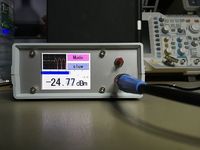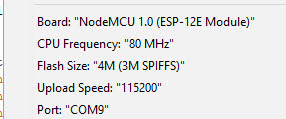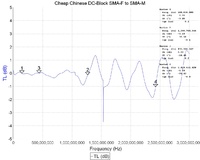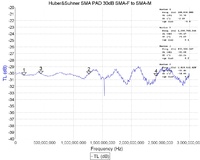I've made a simple cheat sheet for my HamGadgets Ultra Picokeyer because it is hard to remember the various key sequences and abbreviations in the menu mode :-)
 |
Our third SOTA activation for 2018 is done. Monika (DL6SCF), our daugther Lisa and I activated the Römerstein DM/BW-078. Beautiful weather, a little bit overcast and not too warm. The CONDX where better than last sunday. |
 Our second SOTA activation for 2018 is done. Monika (DL6SCF) and I activated the "Michelsberg" DM/BW-855. Beautiful weather - very sunny but not too warm. The CONDX where horrible. Deep QSB from S0 up to S9 from Spain und into the UK - very frustrating.
Our second SOTA activation for 2018 is done. Monika (DL6SCF) and I activated the "Michelsberg" DM/BW-855. Beautiful weather - very sunny but not too warm. The CONDX where horrible. Deep QSB from S0 up to S9 from Spain und into the UK - very frustrating.
 The first SOTA activation for 2018 is done. Monika (DL6SCF) and I activated the "Kaltes Feld" DM/BW-659.
The first SOTA activation for 2018 is done. Monika (DL6SCF) and I activated the "Kaltes Feld" DM/BW-659.
As described here, I've build an RF Powermeter.
After aquiring an HF signal generator, a used HP 8647A, I started to do some testing regarding the precision of the RF powermeter.
Logbook for basic setup of Raspberry Pi 3
I was able to get a used 40dB power attenuator from a fellow ham. It is a 250W version in a very good condition. The attenuator should be usable up to 6GHz.
I've bought a cheap chinese DC-block on eBay for my spectrum analyser.
Here some measurements using the miniVNAtiny with vna/J:
I've bought some 30dB SMA pads from Huber&Suhner.
Here some measurements using the miniVNAtiny with vna/J:
Ich habe von **** eine gebrauchte, schaltbare Eichleitung gekauft. Laut Aufschrift stammt sie von **RE Instruments** aus Jülich. Sie dürfe aus der Zeit vor der Jahrtausendwende stammen und ist wohl aus einem HF-Signalgenerator ausgebaut worden.
Based on the work of Makis, SV1AFN i've build a small, stand-alone power meter with a "nice" GUI. This is the second RF head I've received from Makis. Data about the first one can be found here. 
Here you can find the last spots for DL2SBA on each band within the last day and the all time farest spots.
Here I've collected some configuration stuff for my KiwiSDR.
Today we had a meeting in our local amateur radio club ESSLINGEN P02.The topic for this meeting was WSPR.
Bernd DK9BH was the organizer of this meeting. He has ordered about 10 WSPRlites from SOTABEAMS.
I had the chance, to do same basic measurements on one of the WSPRlite units.
Last year I've build the cheap Frog Sounds QRP Transceiver. This transceiver has a pretty basic audio section - a simple LM386 audio amplifier with some LC/RC filtering.
Here are the first pictures of my KiwiSDR setup ...
I've build the original QRP-labs U3S from stock. Means the supplied crystal on the PLL-based synthesiser-board.
This configuration is basically working up to 20m with a lot amount of drift, but you will get many decodes on wsprnet.org. On 6m you can also get spots - once a day :-/



